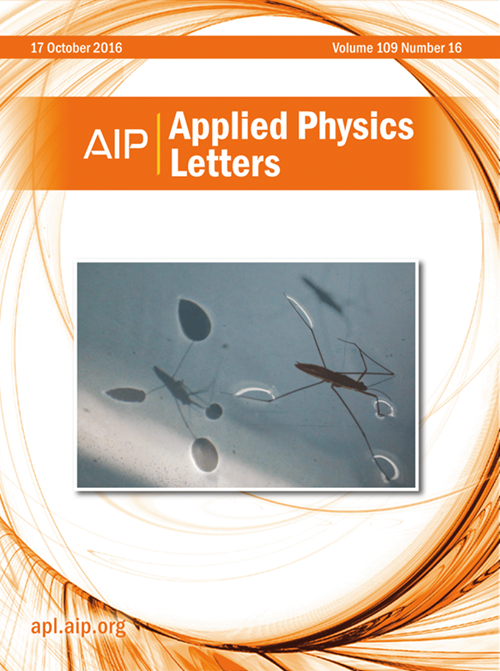Fluorescence detection of a trapped ion with a monolithically integrated single-photon-counting avalanche diode
IF 3.5
2区 物理与天体物理
Q2 PHYSICS, APPLIED
引用次数: 17
Abstract
We report on the demonstration of fluorescence detection from a trapped ion using single-photon avalanche photodiodes (SPADs) monolithically integrated with a microfabricated surface ion trap. The SPADs are located below the trapping positions of the ions and designed to detect 370 nm photons emitted from single 174Yb+ and 171Yb+ ions. We achieve an ion/no-ion detection fidelity for 174Yb+ of 0.99 with an average detection window of 7.7(1) ms. We report a dark count rate as low as 1.2 kcps for room temperature operation. The fidelity is limited by laser scatter, dark counts, and heating that prevents holding the ion directly above the SPAD. We measure count rates from each of the contributing sources and fluorescence as a function of ion position. We use the ion as a calibrated light source along with measurements of the active detector area to estimate a SPAD quantum efficiency of 24±1%.单片集成单光子计数雪崩二极管对捕获离子的荧光检测
我们报告了利用单光子雪崩光电二极管(SPADs)单片集成微制造表面离子阱,从捕获离子中检测荧光的演示。spad位于离子的俘获位置下方,设计用于探测单个174Yb+和171Yb+离子发射的370 nm光子。我们实现了174Yb+的离子/无离子检测保真度为0.99,平均检测窗口为7.7(1)ms.我们报告了室温操作下的暗计数率低至1.2 kcps。保真度受到激光散射、暗计数和加热的限制,这些因素会阻止离子直接保持在SPAD上方。我们测量计数率从每个贡献源和荧光作为离子位置的函数。我们使用离子作为校准光源以及主动探测器面积的测量,估计SPAD量子效率为24±1%。
本文章由计算机程序翻译,如有差异,请以英文原文为准。
求助全文
约1分钟内获得全文
求助全文
来源期刊

Applied Physics Letters
物理-物理:应用
CiteScore
6.40
自引率
10.00%
发文量
1821
审稿时长
1.6 months
期刊介绍:
Applied Physics Letters (APL) features concise, up-to-date reports on significant new findings in applied physics. Emphasizing rapid dissemination of key data and new physical insights, APL offers prompt publication of new experimental and theoretical papers reporting applications of physics phenomena to all branches of science, engineering, and modern technology.
In addition to regular articles, the journal also publishes invited Fast Track, Perspectives, and in-depth Editorials which report on cutting-edge areas in applied physics.
APL Perspectives are forward-looking invited letters which highlight recent developments or discoveries. Emphasis is placed on very recent developments, potentially disruptive technologies, open questions and possible solutions. They also include a mini-roadmap detailing where the community should direct efforts in order for the phenomena to be viable for application and the challenges associated with meeting that performance threshold. Perspectives are characterized by personal viewpoints and opinions of recognized experts in the field.
Fast Track articles are invited original research articles that report results that are particularly novel and important or provide a significant advancement in an emerging field. Because of the urgency and scientific importance of the work, the peer review process is accelerated. If, during the review process, it becomes apparent that the paper does not meet the Fast Track criterion, it is returned to a normal track.
 求助内容:
求助内容: 应助结果提醒方式:
应助结果提醒方式:


